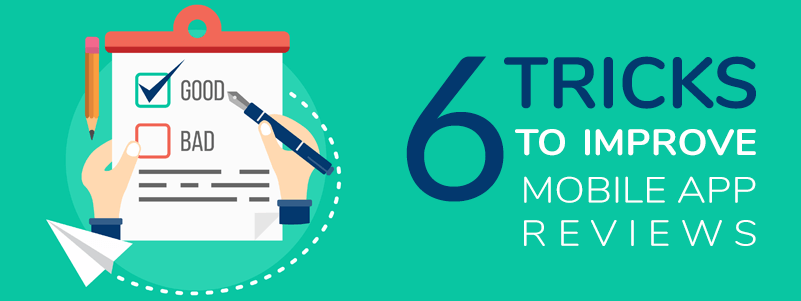Nowadays, there is a stiff competition between apps fighting for space in user’s phone and their attention. The number of apps in the marketplace has already crossed the millions mark which is reducing apps visibility and their number of organic installs. Therefore, developers are now leveraging paid user acquisition channels to get some initial boost after the app launch. Amongst several paid user acquisition channels, Facebook stays on top. Over the years, Facebook has grown exponentially and now, its number of active mobile users is now over a billion making it a perfect space to advertise your app. In this ultimate guide, we will discuss how you can drive app installs by Facebook Ads campaign and all other details you need to know.
Before getting started, you should first understand how Facebook App Installs ads campaign can help you.
– Advance audience targeting.
– Huge user base and you can target your future potential customers based on their interests.
– Complete conversion tracking and send users to a specific screen of your app.
– Cost-effective as compared to other paid user acquisition channels.
– Advertise your app on Instagram, Messenger, and Audience Network at the same time.
Now, that you know why you should use Facebook ads campaign, let’s begin.
What you should do before starting the Facebook ads campaign to drive app installs:
To make a marketing campaign successful, you need to try a lot of variations and analyze their results before deciding which works for you or not. Similarly, in case of Facebook App Install ads campaign, you have to do the same thing in order to get the best ROI. You can use App events to keep track of your conversions related to Facebook ads and in order to use this feature, your app must use Facebook SDK. If you belong to the non-technical world, then leave the job to us. We can integrate your existing app or develop a new one with Facebook SDK integrated from ground up as per your business requirements.
Additionally, you also need to link your Facebook ads account to your app to optimize the app for installs and engagement. Otherwise, Facebook will optimize your campaign for link clicks instead. Read this article to know how you can link your ads account to your app.
Let’s now see how to set up a Facebook App Installs ad campaign:
1. Create Facebook ads manager account:
Visit Facebook Ads manager and create an account. After that, choose to create an ad from the Facebook Ads manager dashboard. After that, you have to choose an objective for your ad. As you want to drive more app installs, you must select App Installs from the list of options, as shown below.

2. Define Ad Set:
Next, you have to specify the ad set name and an app from the app store (Google Play, iTunes, iTunes for iPad, Facebook Canvas, and Amazon Appstore) which you want to promote.
As we mentioned, to optimize your ad delivery for app installs you need to connect your ad account to your app.

Now, you have to define the targeted audience, total budget, ads placements, and schedule.
The best part of campaigning with Facebook is that it allows platform and device-based user targeting. App marketers can use this feature to optimize the ads delivery. Based on the type of your app, you can choose to show your ad only to selected mobile platform (operating system) users and device types based on brands.
In addition to that, you can also choose to display your app install advertisement only when users are connected to WiFi. Nowadays, you can also check for Facebook reels.

Device and OS are just a few examples of Facebook’s detailed targeting feature. You can broadly target users based on demography, behavior, and interests. These targeting features allow marketers to narrow down the audience and reach only to potential customers. So if you know your audience, then half the battle is already won.
More advanced user targeting:
In Facebook ads campaign, you can set up 2 different types of audiences to target i.e., custom and lookalike.
– Custom audiences: If you have customer’s email, then you can simply upload them to retarget them via Facebook App Install Ads.
– Lookalike audiences: Based on your customer’s data, Facebook can show ads of your app to people who are just similar to your existing customers and based on the fact that Facebook knows a lot about us, you can’t doubt its targeting efficiency.
– Connections targetting: It allows you to exclude people who have already installed your app. You can also exclude people who have already liked your page or followed your business profile on Instagram.
Now, that you have defined your targeted audience, let’s now see about the ads placements.
Ads placement: Choose the placements where you want to display the ad of your app. By default, it is automatically decided by Facebook based on old data and we recommend not to play with it. If you choose manual placements, then delivery of your ad may get reduced. For best results, let Facebook decide where to show your ads to its 3.07 billion monthly active users.
You can place Facebook ads at following places: Feeds, Instant Articles, In-Stream videos, Right Column, and Suggested Videos. If you want you can also promote your app on Instagram, Messenger, and Audience Network of Facebook.

Daily budget and schedule: Specify your marketing campaign budget and when you would like to run the ads.

3. Optimization for app installs Ad delivery:
Use app events to monitor the key metrics of your app promotion campaign on Facebook. The recorded data will help you keep track of conversions related to your ads in Facebook Analytics. To add an app event, go to app installs, and choose Add events to display your ads only to people most likely to take an action.
After all these steps, here is the most interesting one i.e., designing a creative for your Facebook ad campaign. The steps seemed quite a bit like ASO (App Store Optimization) to us. Nonetheless, let’s begin the fun part.
4. Creating Facebook Ad creative:

– Start with connecting your Facebook page and Instagram accounts, if you want to connect them with the ad.
– Format: Choose how would you like to display your add. You can select any one of these formats: Carousel, Single image, Single video, and Slideshow.
– Media: Upload or import image, images, or video you want to add to your app. Use HQ images (1200 x 628) of 1.9:1 ratio. And as said above follow image guidelines to avoid any penalization.
– Text (100 characters): Define your ad headline and text, as shown in the screenshot above. Make sure your text is catchy but don’t include false claims (your app might get a low relevance score).
– Deep link URL: Use deep link URL to direct users to a specific part of your app, after they install it.
– Specify CTA: There are many Call To Action (CTAs) available but the one you need to choose is Install Now.
– Pixel Tracking: Use Facebook pixel to drive your ad engagement to your website as well.
– Ad Review: Review all your ad configurations and ensure Facebook ad tracking is set up correctly before placing your order.
Facebook App Install ads best practices:
Here are some tips and best practices from our side to make your Facebook App Install ads campaign successful.
1. Use your budget wisely. Divide it into smaller chunks and A/B tests different versions of Ads creative and then see which one performs better. You can always scale your campaign, therefore, be cautious in the beginning.
2. Don’t test more than 2 versions of app install ads at the same time.
3. Ads that run on Instagram, Facebook, and Audience Network are subjected to an examination process which sees the amount of text used in your image. Don’t put more than 20% text in your image. If you don’t follow these guidelines, then your ad delivery will not be optimized. Use this Facebook tool to check the percentage of overlay text in your image.
4. Text in images is allowed if you are promoting a gaming app or app which displays multiple products, books, etc.
5. Follow image guidelines: Your app screenshots shouldn’t include any adult or sexually explicit content. Even photos of zoomed body parts are not allowed. Let’s say, you want to promote your fitness app. In that case, you should use a full body image and avoid images which are zoomed in to show abs, shoulders, etc. Instead of relying on dirty tricks to fool user and Facebook, you should try to play fair and include quality screenshots of your app which demonstrates its functionality.
We hope that this article with help you to drive app installs by Facebook ads campaign. In case, you have some queries, then post them in the comments section below, and we will be happy to assist you. You can also share your Facebook Ads campaign story with us, and we will cover it in detail if it suits our reader’s interests. If you have an app and want to integrate Facebook SDK in it, then you can hire our developers to do the job for you.
Send us your project queries at [email protected].
Read our latest posts:




